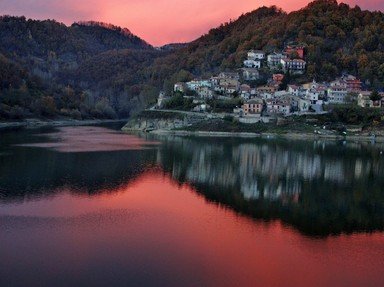Quiz Answer Key and Fun Facts
1. This quiz is titled after the opening song of the album "A Trick of the Tail", released in 1976 by what well-known English progressive rock band?
2. In what novel by Jules Verne do the main characters travel down an Icelandic volcano and reach a world populated by prehistoric animals?
3. Lava lizards are a number of species of the genus Microlophus that are endemic to what archipelago of volcanic origin, well known as a unique biodiversity hub?
4. This delectable dessert, called "mi-cuit au chocolat" in French, is known in English by which volcano-related name?
5. In what animated Disney film, released in 1940, would you find a villainous character named Stromboli?
6. Hephaestus, the Greek god of fire and blacksmithing, called Vulcan by the Romans, was believed to have his forge under what iconic European volcano?
7. The "Year Without a Summer" that followed the devastating eruption of Mount Tambora in 1815 greatly influenced the work of what iconic English painter?
8. What famous Roman author, known for his "Natural History", died in 79 AD during the eruption of Mount Vesuvius that buried Pompeii and other neighbouring towns?
9. Also known as volcanic glass, obsidian was extensively used by many ancient civilizations, in particular those from what historical region of the world?
10. Catholics pray to Saint Januarius for protection against earthquakes and volcanic eruptions. He is also the patron saint of what populous Italian city, prone to both phenomena?
Source: Author
LadyNym
This quiz was reviewed by FunTrivia editor
agony before going online.
Any errors found in FunTrivia content are routinely corrected through our feedback system.

